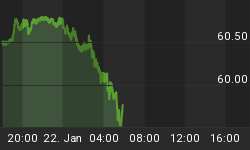| Merk Market Outlook provides the weekly perspective on the markets and the economy. Don't miss an Outlook: Sign up for our Newsletter The Archive: Read past Market Outlooks | |
Nearly ten years ago the Federal Open Market Committee convened a special meeting to address the problems in U.S. financial markets regarding the failure at Long Term Capital Management. It is not without irony that one decade later the Fed and the U.S. Treasury are addressing an infinitely more complex problem with respect to Fannie Mae and Freddie Mac, while at the same time contemplating the potential failure of major investment and commercial banks.
Unlike the special meeting that occurred over a decade ago, there is little doubt that the Fed will remain on hold ahead of the September 16 FOMC meeting. Due to the issues with inflation that still are at the forefront of Fed considerations, there will be no rate cut to assuage a market still reeling due to the ongoing problems in the financial system.
We expect that the statement will forthrightly acknowledge the actions taken by the U.S. Treasury and employ language regarding positive market reaction in light of the unprecedented move by the Federal Government. The FOMC will probably seek to place light on the narrowing in swap spreads and the decline in long-term mortgage rates that have occurred in the aftermath of Mr. Paulson's statement on Sunday September 7.

Without a doubt the actions taken by the U.S. Treasury will provide a major subject for discussion either in the formal meeting or any prospective special meeting that the statement may announce. The systemic risk posed by the issues at Fannie and Freddie are such that we went back and examined the transcript from the October 15, 1998 meeting surrounding the problems at Long Term Capital Management to ascertain the possible shape of the upcoming statement and the ensuing minutes to the meeting that will be released on October 7.
In that meeting committee members had a three primary concerns that provide an eerie parallel to the current crisis. First the committee was primarily concerned about a potential spillover of instability into the non-financial community. Like today, fear and uncertainty in the markets prevailed.
Second, the committee was concerned with major problems at other banks that were not acknowledged. William McDonough, who was the head of the NY Fed at that time openly, wondered if there were "skeletons still rattling around in the closets that have not been revealed."
Third, the committee was concerned with the issue of moral hazard caused by the bailout.
We think that this provides a good frame or reference in which to evaluate the upcoming FOMC statement. One year into the domestic financial crisis, the market has only observed partial spillover into the greater non-financial community that has largely been responsible for keeping the economy afloat during the crisis. And it is quite clear that many of the financial players singed by the heat from the meltdown in the housing industry have yet to come clean and mark to market their losses.
Given that the financial industry continues to access "temporary credit facilities" at the Fed we would not be surprised to see in a few years when the transcripts for this meeting are released if the committee is found to be considering opening access to such facilities to the non-financial community.
Our Senior Economic Advisor William Poole has made a very persuasive case that the Fed has inadequately defined the post Fannie and Freddie financial world. Concerns over moral hazard still prevail. After saving Bear Stearns we wonder if the Fed might be tempted to say yes, should a large auto company, a large insurance company or a major metropolitan area suddenly need emergency financing. We believe that these are but a few of the ideas behind the interesting discussion taking place in markets regarding the credit quality of the United States.
Thus, we anticipate that the committee will utilize language reinforce its intent to provide adequate liquidity should conditions in the market change in the aftermath of the action taken by the U.S. Treasury.

The committee should note the deceleration in economic activity in the context of weak labor markets and the ongoing stress in financial markets. The statement should retain language regarding the efficacy of past monetary policy with respect to fostering market liquidity and moderate economic growth.
We expect that the committee will note the recent decline in the prices of energy and some commodities, while reaffirming their expectation that inflation will moderate later this year, although that outlook will remain highly uncertain.
The assessment of risks should remain balanced between risk and growth. Even with the basic Taylor Rule implying that monetary policy remains accommodative by at least 150 basis points, the Fed will continue to hold rates steady as it modestly attempts to reduce the money supply after a long period of accommodation.
















